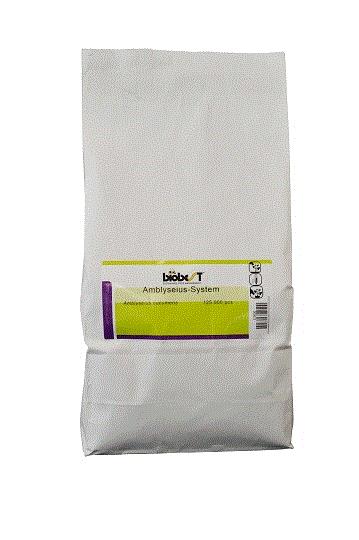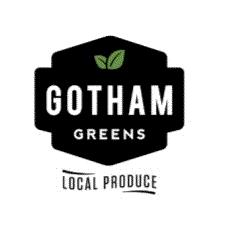Response to Romaine Recall
There’s a lot to unpack here, but first, just the facts, ma’am: Two days before Thanksgiving (or, for our Canadian friends to the North, November 20), the CDC posted an alert investigating a multi-state E. coli outbreak and stated “epidemiologic evidence indicates that romaine lettuce is a likely source of this outbreak.”
The CDC advised consumers not to eat romaine lettuce of any kind until more information was available. Since then, the CDC has rolled that back to advising “U.S. consumers not eat and retailers and restaurants not serve or sell any romaine lettuce harvested from the Central Coastal growing regions of northern and central California. If you do not know where the romaine is from, do not eat it.” The California counties identified in the investigation are: Monterey, San Benito, San Luis Obispo, Santa Barbara, Santa Cruz and Ventura.
A lot of hydroponic and greenhouse lettuce growers, obviously, were caught up in the initial recall despite knowing their product was not contaminated. As the investigation continued, the FDA and CDC worked with the industry to allow voluntary labeling so growers could show consumers where the product came from. You can see the details from United Fresh Produce Association for labeling and what it could mean here.
In the wake of the recall, I saw many news stories from the U.S. and Canada touting the safety of hydroponically grown lettuce. So, here’s my take on this: Yes, this is absolutely an opportunity for CEA growers to talk about how they grow their product and what sets them apart from field-grown crops. However, greenhouse operations are not immune from E. coli contamination, so I think we have to be cautious in our statements. Here’s an interesting study from 2014 comparing open-field growing to greenhouse lettuce, showing there still can be some contamination in the greenhouse, though it’s far less likely.
I do think it’s great, though, that hydroponic growers are taking this opportunity to educate consumers about how their product is grown and what kind of safety requirements they adhere to. The more the consumer knows, the more likely they are to search out your product, whether there’s a recall or not. And I see some positive responses from consumers who are pledging to only buy local from now on.
Drop me a line and let me know how your operation responded to the recall.

New Pest & Disease Control Guide
Consider it an early Christmas present from GrowerTalks, thanks to BASF: the new Insecticide, Miticide & Fungicide Guide is out now.
The guide highlights the 2019 pest control materials for managing insect and mite pests in greenhouses, as well as focuses on topics like fall disease prevention, battling whiteflies, chemical class charts for ornamental fungicides, disease facts and controls, and much more.

Click here to check it out.
Online Greenhouse Classes Available
Michigan State University is offering non-credit online greenhouse classes this winter in three different subject areas, but if you want to participate you have to sign up soon—the deadline is Friday, December 7.
The three subject areas are:
Greenhouse and Horticultural Lighting—Intended for greenhouse and ornamental plant growers and others interested in learning about the fundamental concepts about how plants respond to light quality, quantity and duration … The units in the course cover photoperiod, photoperiodic lighting, light quality, quantity and duration, and factors that should be considered when replacing or installing new lamps.
Biological Control for Greenhouse Growers (offered in English and Spanish)—Intended for greenhouse growers and others interested in learning about the challenges and opportunities associated with a biological control pest management program. The content of the course covers introductory materials to more advanced concepts such as utilizing banker plants.
Floriculture Root Zone Management—Covers the fundamental concepts about irrigation water, media and their effects on plant nutrition. The course covers water sources, water quality, water treatment, irrigation methodology and substrate components. The final unit of the course covers the essential elements for plant nutrition, how to select a fertilizer and how to monitor nutrition of greenhouse crops.
Each course costs $129. Click here to register, and remember, the deadline is December 7!

Biobest's Eco-Friendly Redesign
Always looking for a better way, Biobest recently announced it's switching its bulk Amblyseius cucumeris packaging from a plastic bucket to a paper bag.
“Reducing reliance on plastic is a key focus. With this in mind, our team has redesigned the packaging for the Biobest bulk Amblyseius-System, replacing plastic buckets with specially designed eco-friendly paper bags,” the media release says. The paper bags replace 5-L buckets, which were used for the 125K, 250K and 500K bulk Amblyseius-Systems, but will deliver the same predatory efficacy.

The new packaging rolled out starting yesterday (Monday, December 3) and the company says it will roll out additional eco-friendly packages for other predatory mites soon.
Find out more at biobestgroup.com.
Online Fresh Food Purchases
I have to say, I was pretty surprised at the numbers that came out of a 2018 Online Grocery Shopper Study by the Retail Feedback Group (RFG), which we first saw reported in the HortAmericas newsletter.
This study showed increases of over 50% year-over-year for people purchasing produce online, with 42% of respondents saying they purchased produce online. It tied deli meats and cheeses as the category with the most growth year-over-year.
In a release about the study, Brian Numainville, RFG Principal, said, “With an ever-increasing number of online grocery shopping options, consumers are clearly responding and purchasing a wide range of items. The willingness to purchase fresh items in higher frequencies than last year illustrates that providers are improving in their ability to overcome objections that historically have been limiters in these areas. While there is still room for growth, this finding provides encouraging news for retailers and others offering online food shopping services.”
You can read the full release about the study here. I'm curious to hear if any of our readers sell fresh produce online or have plans to in the near future. Email me with the details: jpolanz@ballpublishing.com.

LumiGrow Case Studies
LumiGrow Lighting, an LED light supplier, has compiled a set of case studies from some of its customers on the company website. I’ve been watching the newsletter as they send out links to the stories, and I think they can be informative and helpful. You can visit the main Customer Stories landing page and search through the case studies by industry.
For example, the last one sent out profiled Copperstate Farms, a cannabis operation in the unusually named town of Snowflake, Arizona. (I went down the rabbit hole on this one: the town was settled in the late 1800s by Mormon Pioneers Erastus Snow and William Jordan Flake. But, seeing as it’s the northernmost town in the White Mountains, it actually does snow in Snowflake, Arizona.)
Anyhoo, Copperstate was able to reduce its production time by 15%, allowing it to add another turn to its cannabis crops. You can read that full story here.
Gotham Greens' Good Turn
Last newsletter, I told you about Peace Tree Farm and its annual Farm-to-Table dinner that benefited a local charity. Today, I’m going to tell you about the holiday donation efforts of Gotham Greens, a multi-state greenhouse produce operation.

Right before Thanksgiving, Gotham Greens donated locally grown salad greens to multiple organizations throughout its communities for those who were facing food insecurity, including:
-
A Thanksgiving dinner hosted by Chicago’s Ninth Ward Alderman Beale in the Pullman neighborhood, where more than 500 community members come together for an annual holiday meal.
-
Salad green donations to non-profit partners including The Greater Chicago Food Depository and The Food Bank of Northwest Indiana.
-
Helping Community Solidarity, America’s largest all-vegetarian hunger relief food program, donate greens to New Yorkers facing food insecurity over the holidays.
-
Fresh produce donations to Rethink Food NYC, City Harvest and West Side Campaign Against Hunger’s Mobile Markets.
Gotham Greens doesn’t just turn out for the holidays, either. All told, in 2018, the grower donated more than 30,000 pounds of fresh produce to community organizations. It also has donated more than 35,000 plant seedlings to partnering organizations, including The New York City Department of Parks and Recreation, The Chicago Park District, Green Bronx Machine, Wellness in the Schools, Big Green and Emma’s Torch, among others.
Have you made a positive difference in your community? Email me and let me know how!


As always, feel free to email me at jpolanz@ballpublishing.com with comments, questions, news and views.
Until next time,

Jennifer Polanz
Editor-at-Large
Inside Grower
This email received by 26,831 loyal readers!
Interested in advertising in Inside Grower? Contact Paul Black or Kim Brown and they'll show you how easy, effective and affordable it is.